Note: The links below go to external websites and are intended to provide information only. If you have any further questions or would like assistance handling a weed infestation on your property, please contact the Tillamook County Soil and Water Conservation District Weed Program Coordinator.
Oregon Department of Agriculture lists ‘noxious’ weeds as being either “A” or “B” listed, and those definitions are listed below:
“A” Listed Weed: – a weed of known economic importance which occurs in Oregon in small enough infestations to make eradication or containment possible; or is not known to occur, but its presence in neighboring states make future occurrence here seem imminent.
“B” Listed Weed – a weed of economic importance which is regionally abundant but which may have limited distribution in some counties.
WEEDS OF CONCERN
This list constitutes the bulk of the species that Tillamook County SWCD is monitoring for and taking action against. It is by no means comprehensive. Plants of this list are either currently in the county and are problematic, or they are in neighboring counties.
English Ivy Garlic Mustard Giant Hogweed Goats-rue Gorse Italian Arum Japanese Knotweed Lesser Celandine Mouse-ear Hawkweed Old Man's Beard Orange Hawkweed Policeman's Helmet Purple Loosestrife Scotch Broom Coltsfoot Vinca Water Primrose Yellow Archangel Yellow Flag Iris Yellow Floating Heart Japanese Coltsfoot Darwin's Barberry
Photo Common & Scientific Name ODA List Prevalence Why it is a problem
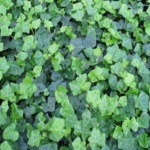
English Ivy (Hedera helix) B List Nearly ubiquitous in Tillamook County Promotes erosion and kills trees
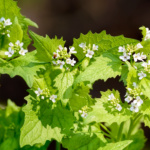
Garlic Mustard (Alliaria petiolata) B List Not common in Tillamook County, but problematic elsewhere Spreads through prolific seed production and plant pieces being moved around.
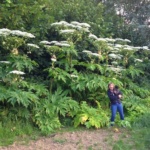
Giant Hogweed (Heracleum mantegazzianum) A List At least one known site in Tillamook County Giant Hogweed is increadibly invasive in riparian areas, but can grow in many habitats. The sap is toxic and can severly burn your skin if exposed to sunlight.
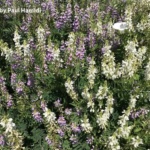
Goats-rue (Galega officinalis) A List Found in neighboring county Is is not yet established in Tillamook County, but is highly invasive.
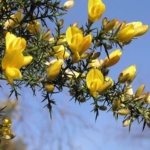
Gorse (Ulex europaeus) B List Limited to a few known sites in Tillamook County. Gorse is basically scotch broom with thorns, plus it is highly flammable.
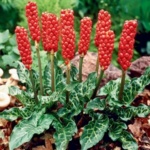
Italian Arum (Arum italicum) Not listed Common horticultural plant, a few incidental sightings. Spreads via tubers and very difficult to remove once established.
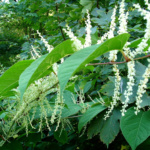
Japanese Knotweed (Fallopia japonica) B List Ubiquitous in waterways in North Tillamook County, less well-established in south Tillamook County. Prevents trees from re-seeding stream sides, causes erosion, alters nutrient cycling and can damage building foundations.
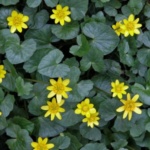
Lesser Celandine (ranunculus ficaria) B List One reported site in Tillamook County Persists due to mini tuber production and not yet established in Tillamook County.
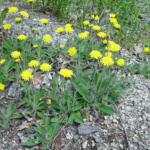
Mouse-ear Hawkweed (Hieracium pilosella) A List Found in neighboring county It is not yet established in Tillamook county, but is highly invasive.
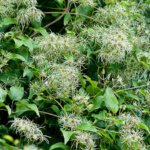
Old Man's Beard (Clematis vitalba) B List Found in neighboring coutnies It over-tops and kills trees
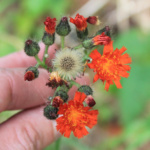
Orange Hawkweed (Heiracium aurantiacum) A List Found in neighboring county It is not yet established in Tillamook County, but is highly invasive.
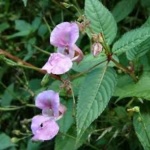
Policeman's Helmet (Impatiens glandulifera) B List Becoming established in Tillamook County. Many large populations have been observed. It displaces other plants and its shallow roots don't hold the river banks that it colonizes.
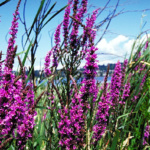
Purple Loosestrife (Lythrum salicaria) B List Limited to a few site in Tillamook County It forms dense monocultures in wetlands and displaces wildlife.
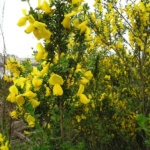
Scotch Broom (Cytisus scoparius) B List Extremely common weedy shrub, has long-lived seeds Once a seed bank is established, it can last for over 50 years.
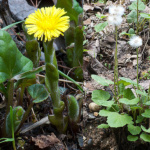
Coltsfoot (Tussilago farfara) A List Previously found in neighboring county It is not yet established in Tillamook County, but is highly invasive.
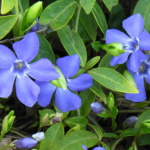
Vinca (Vinca minor) B List Common landscaping plant, used as ground cover. It frequently escapes and creates dense monocultures.
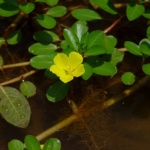
Water Primrose (Ludwigia peploides) B List Found in neighboring counties Reduces oxygen levels in water and displaces native species.
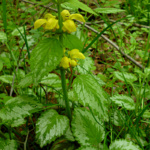
Yellow Archangel (Lamiastrum galeobdolon) B List Fairly common ornamental weed in Tillamook County. Spreads into forest understory and can grow from cutting and yard waste.
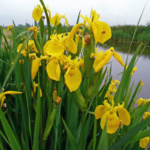
Yellow Flag Iris (Iris pseudacorus) B List Common riparian area weed It tends to take over sensitive habitat in estuaries and slow moving waterways.
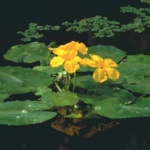
Yellow Floating Heart (Nymphoides pelata) B List Found in neighboring county. It is not yet established in our county, but is highly invasive.
WATCH LIST The species below are not officially listed as noxious weeds, but have characteristics of invasive species or are invasive in other areas with similar climates to our own in Tillamook County.
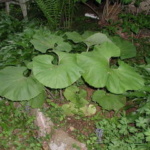
Japanese Coltsfoot (Petasites japonicus) Not Listed 2 known sites, spreads in shady locations. It spreads through a shallow root system and thrives in shaded environments.
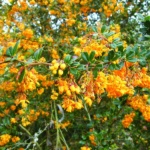
Darwin's Barberry (Berberis darwinii) Not Listed A few plants have been observed away from their original plantings. Problematic in New Zealand where the climate is similar to Tillamook County.
